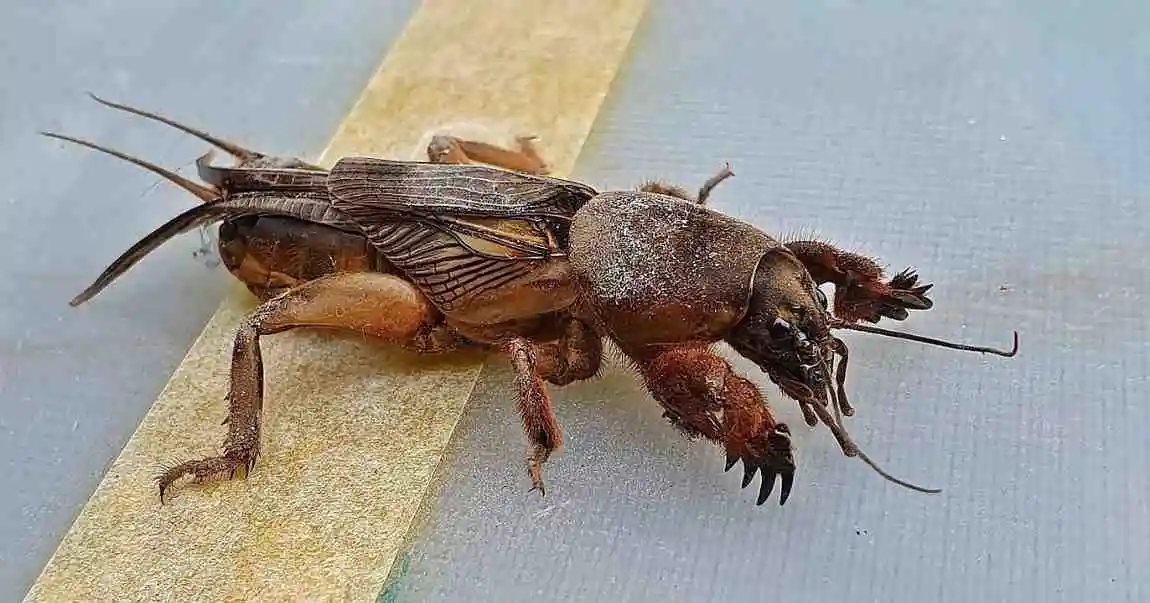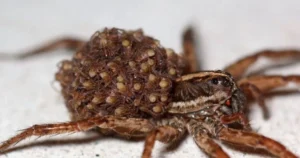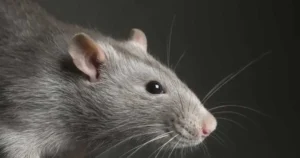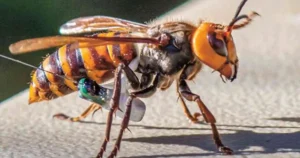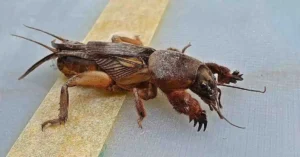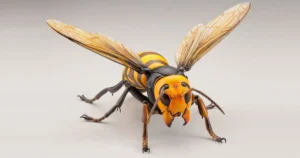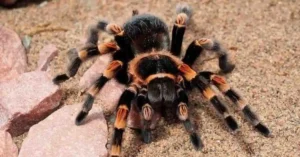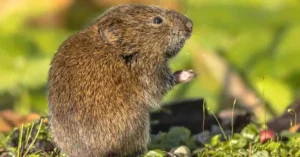Mole crickets are among the most destructive pests for lawns, causing extensive damage through their burrowing and feeding activities. Their behavior leads to dying patches of grass and unsightly tunnels, disrupting the aesthetic and health of your turf. This article provides a detailed guide on how to identify, prevent, and eliminate mole crickets effectively while maintaining a vibrant lawn.
What Are Mole Crickets?
Mole crickets are small, burrowing insects with spade-like front legs adapted for digging. They are typically brown or tan in color and range from 1 to 2 inches in length. These pests are notorious for feeding on grass roots and shoots, causing widespread lawn damage.
Lifecycle and Behavior
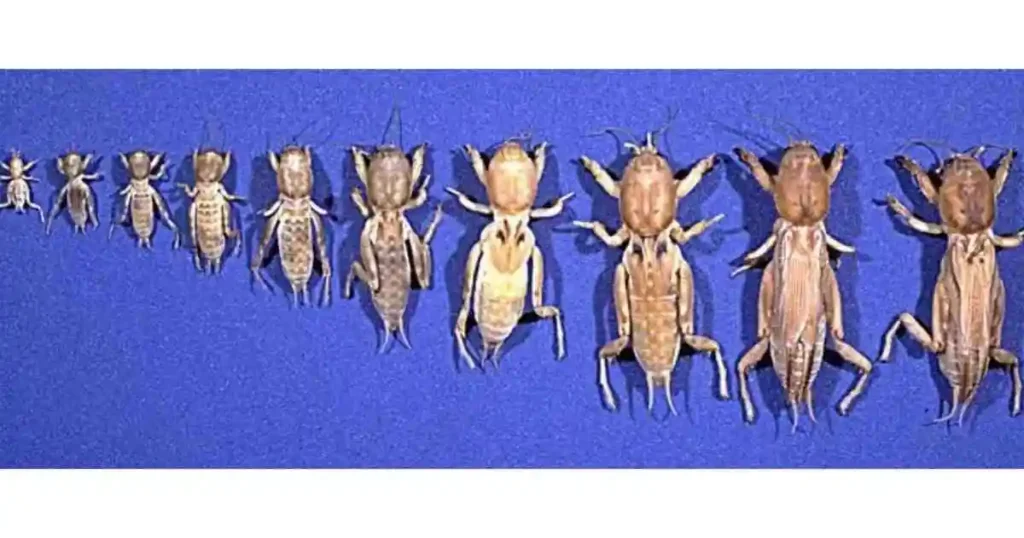
Mole crickets have a unique lifecycle that influences their activity and the damage they cause:
- Egg Stage: Female mole crickets lay eggs in the soil during spring.
- Nymph Stage: The eggs hatch into nymphs that begin feeding immediately on grass roots.
- Adult Stage: By late summer, nymphs mature into adults and continue burrowing and feeding.
Understanding their lifecycle helps in timing control measures effectively to reduce their impact.
Signs of Mole Cricket Infestation
Identifying a mole cricket problem early can prevent severe lawn damage. Here are common indicators:
- Tunnels: Raised, mole-like tunnels just below the soil surface.
- Dying Grass: Brown patches of grass that fail to recover after watering.
- Soft Soil: Spongy or loose soil caused by extensive tunneling.
- Activity at Night: Increased movement and damage during nighttime, especially after rain.
Preventive Measures
Proactive prevention is the best strategy to protect your lawn from mole crickets. Here are some key steps:
1. Lawn Maintenance
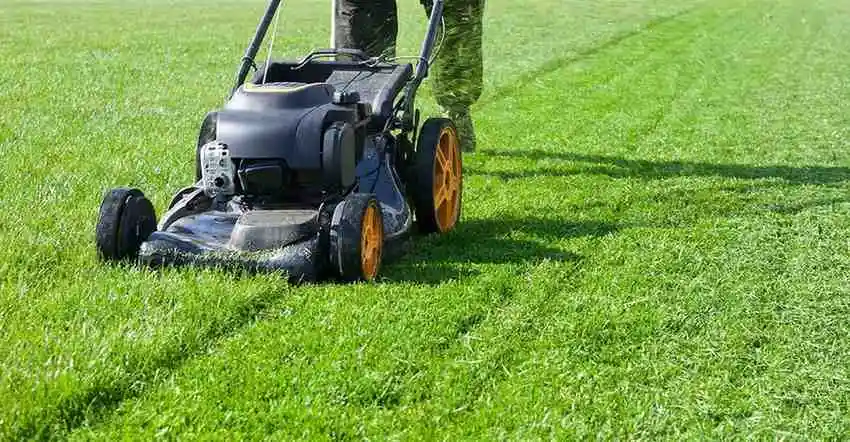
- Mow Regularly: Keep grass height optimal to discourage mole cricket activity.
- Aerate the Soil: Aeration improves drainage and compacts the soil, making it less inviting for burrowing pests.
- Fertilize Wisely: Use balanced fertilizers to strengthen grass roots, making them more resilient to damage.
2. Biological Control
Introduce natural predators like birds and beneficial nematodes to your lawn. These organisms prey on mole crickets and reduce their population naturally.
3. Soil Monitoring
Regularly inspect your soil for early signs of mole cricket activity, especially during spring and summer.
Effective Control Methods
Once you confirm mole cricket infestation, implementing control methods is crucial to reclaim your lawn.
1. Chemical Treatments
Insecticides specifically designed for mole crickets are highly effective when applied correctly. Look for products with active ingredients like bifenthrin or imidacloprid. Follow these steps for optimal results:
- Timing: Apply insecticides in late spring or early summer when nymphs are small and vulnerable.
- Application: Use a broadcast spreader for granules or a sprayer for liquid formulations.
- Watering: Lightly water the treated area to help the chemicals penetrate the soil.
2. Biological Solutions
- Beneficial Nematodes: These microscopic organisms attack mole crickets by releasing bacteria that kill them.
- Fungal Pathogens: Certain fungi target mole crickets, causing infections that control their population naturally.
3. Cultural Practices
- Flooding: Saturating the soil with water can force mole crickets to the surface, where they can be collected and removed.
- Trapping: Use light traps during the evening to attract and capture adult mole crickets.
4. Companion Planting
Certain plants can deter mole crickets and other pests. Consider planting marigolds or chrysanthemums around your lawn’s perimeter. These plants produce natural chemicals that repel insects, including mole crickets, creating an additional layer of defense.
Repairing Lawn Damage
After successfully controlling mole crickets, it’s essential to repair the damage they caused. Here are the steps to restore your lawn:
1. Soil Leveling
Fill tunnels and depressions with soil to restore even ground. Compact the soil to eliminate air pockets.
2. Overseeding
Apply grass seed to bare patches, ensuring the species matches your existing lawn. Water and fertilize appropriately to promote growth.
3. Aeration
Aerate the lawn to improve root growth and enhance soil health, preventing future pest infestations.
4. Mulching
Use organic mulch to cover reseeded areas. Mulching helps retain soil moisture, suppress weeds, and protect new grass as it grows. This extra step ensures the successful recovery of your lawn.
Seasonal Lawn Care Tips
Adopting a seasonal approach to lawn care ensures year-round protection and a healthy lawn. Here’s a breakdown:
Spring
- Inspect for mole cricket activity.
- Apply preventive treatments like nematodes.
- Fertilize to strengthen grass roots.
Summer
- Monitor for tunnels and damage.
- Apply insecticides if necessary.
- Maintain proper watering practices to avoid over-saturation.
Fall
- Aerate the soil to improve drainage.
- Reseed any damaged areas.
- Prepare the lawn for winter dormancy.
Winter
- Reduce lawn activity to prevent soil compaction.
- Plan preventive measures for the coming spring.
Additional Tips for Lawn Care Enthusiasts
Beyond addressing mole crickets, maintaining a vibrant lawn requires attention to general lawn care practices:
- Regular Watering: Ensure your lawn receives about 1 inch of water weekly, whether from rainfall or irrigation.
- Weed Control: Apply herbicides or manual methods to eliminate invasive weeds that compete with grass.
- Soil Testing: Check soil pH and nutrient levels annually to adjust fertilization strategies effectively.
- Rotational Planting: Alternate planting of grass varieties to increase resistance to pests and diseases.
By incorporating these additional measures, you can enhance the overall resilience and beauty of your lawn.
Conclusion
Mole crickets pose a significant threat to lawns, but with early detection and the right control measures, their impact can be minimized. Preventive strategies, biological controls, and timely chemical treatments are effective ways to combat these pests. After eliminating mole crickets, focus on repairing your lawn and adopting seasonal care practices to maintain its health and beauty.
A well-maintained lawn not only enhances your property’s appearance but also provides a space for outdoor activities and relaxation. With the steps outlined in this guide, you can ensure your turf remains lush and mole-cricket-free.
FAQs
1. What are the best times to apply insecticides for mole crickets?
Insecticides are most effective when applied in late spring or early summer, targeting the nymph stage when mole crickets are most vulnerable.
2. Can mole cricket infestations recur?
Yes, mole crickets can return if preventive measures are not maintained. Regular soil monitoring and lawn care practices can help prevent re-infestations.
3. Are biological controls safe for pets and children?
Yes, biological controls like nematodes and fungi are environmentally friendly and safe for pets and children when used as directed.
4. How long does it take to repair lawn damage caused by mole crickets?
Lawn repair timelines vary depending on the extent of the damage. With proper reseeding and care, visible improvement typically occurs within a few weeks.

James William is a passionate animal lover and expert in the Animals and Pets niche. With years of experience in pet care, wildlife studies, and blogging, James shares practical tips, heartwarming stories, and expert advice to help pet owners build stronger bonds with their furry, feathered, and scaly companions.
